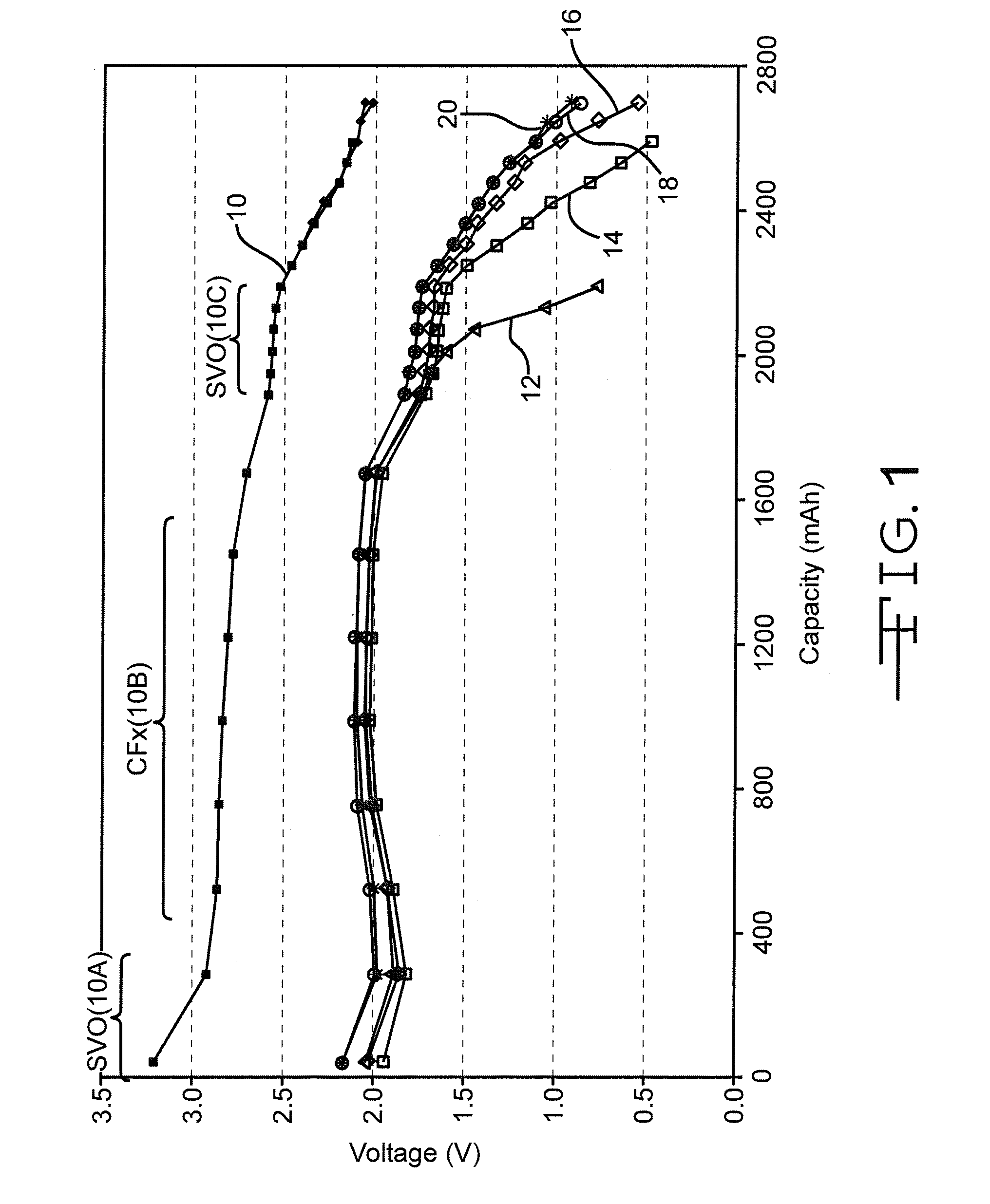ANODE-TO-ANODE CAPACITY RATIOS FOR SVO/CFx HYBRID CATHODE ELECTROCHEMICAL CELLS
a technology of hybrid cathode electrochemical cells and anode capacity ratios, which is applied in the direction of primary cell maintainance/servicing, non-aqueous electrolyte cells, cell components, etc., can solve the problems of increasing the time to charge the icd's capacitors, the cell exhibits, and the middle-life voltage delay accompanied by a permanent increase in impedance, so as to improve the performance of lithium electrochemical cells and high energy density ,
- Summary
- Abstract
- Description
- Claims
- Application Information
AI Technical Summary
Benefits of technology
Problems solved by technology
Method used
Image
Examples
example
[0050] Several sample cells were built using various anode-to-cathode ratios. The cathode assemblies were prepared by pressing approximately 337 mg of CFx in a matrix of binder and conductive additive between two titanium current collector screens. Approximately 246 mg of silver vanadium oxide in a matrix of binder and conductive additive was pressed on both sides of this assembly to provide a cathode having the configuration: SVO / current collector screen / CFx / current collector screen / SVO. The total surface area of each cathode assembly was about 15 cm2. The total capacity of each cathode assembly was 0.337×0.875+0.246×0.315×2=0.450 Ah. The minimum opposing anode capacity as defined by the present invention is therefore calculated from the formula: (0.337×0.875×0.8)+(0.246×0.315×2×0.40)=0.298 Ah. The maximum opposing anode capacity is equal to 0.45×1.25=0.563 Ah. The cathode assembly was heat-sealed inside a polyethylene separator.
[0051] The cathode assemblies were combined with a l...
PUM
| Property | Measurement | Unit |
|---|---|---|
| current densities | aaaaa | aaaaa |
| current densities | aaaaa | aaaaa |
| weight percent | aaaaa | aaaaa |
Abstract
Description
Claims
Application Information
 Login to View More
Login to View More - R&D
- Intellectual Property
- Life Sciences
- Materials
- Tech Scout
- Unparalleled Data Quality
- Higher Quality Content
- 60% Fewer Hallucinations
Browse by: Latest US Patents, China's latest patents, Technical Efficacy Thesaurus, Application Domain, Technology Topic, Popular Technical Reports.
© 2025 PatSnap. All rights reserved.Legal|Privacy policy|Modern Slavery Act Transparency Statement|Sitemap|About US| Contact US: help@patsnap.com

